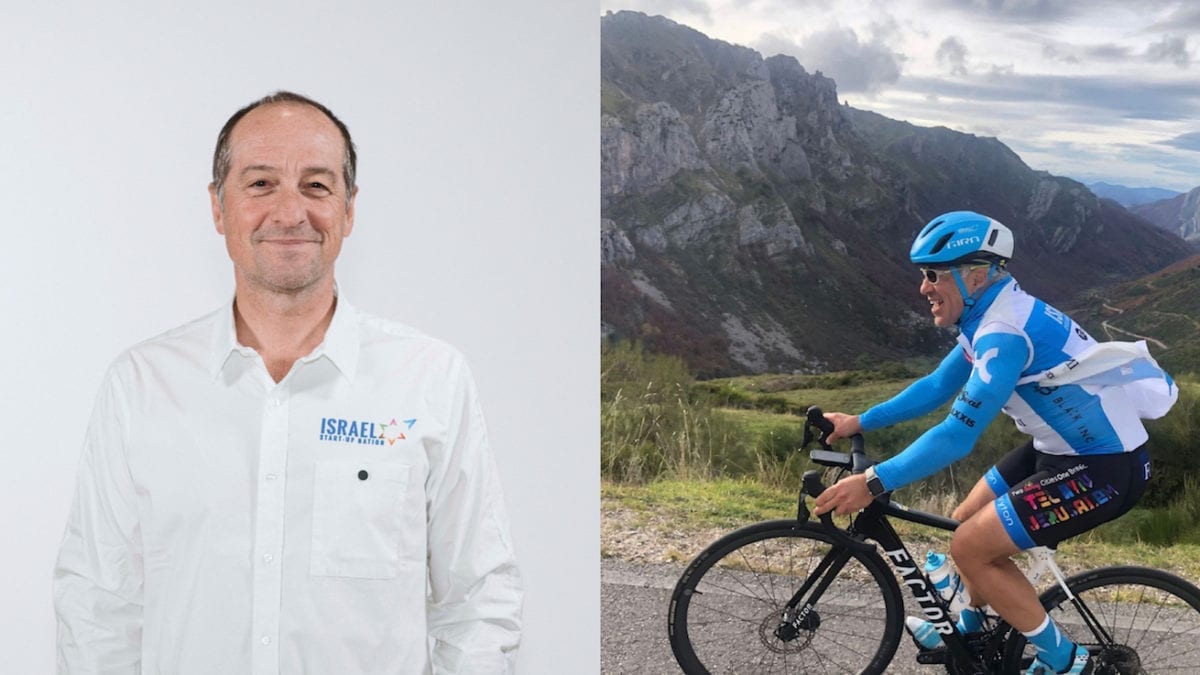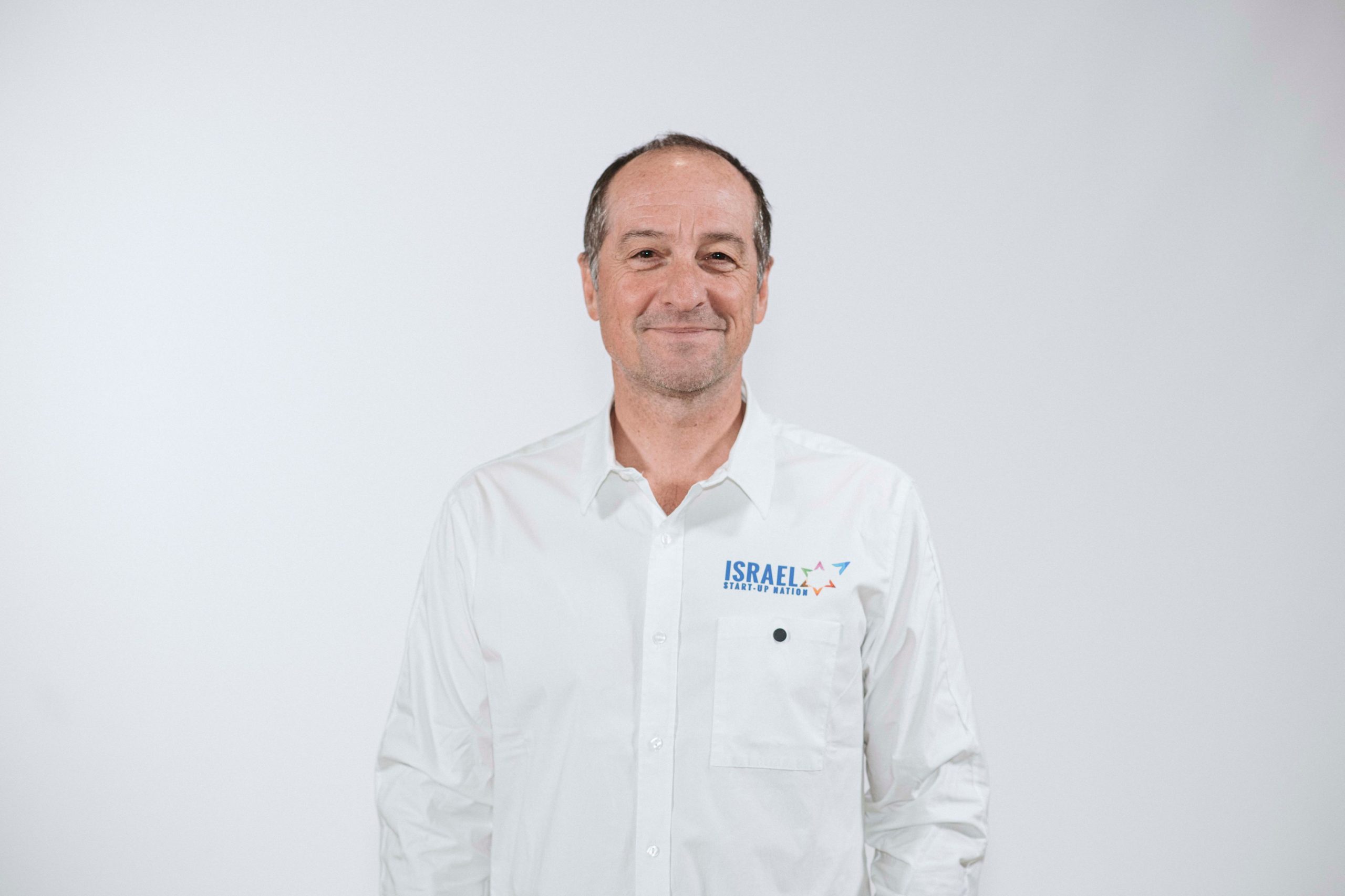The two Canadians behind one of the world’s biggest cycling teams
Israel Start-Up Nation’s Sylvan Adams and Paulo Saldanha are making space for Canucks at the WorldTour level
 Photo by:
Noa Arnon
Photo by:
Noa Arnon
Two Montrealers have been working diligently for years creating opportunities for Canadians in the pro peloton. Making a professional career out of cycling isn’t easy for Canadians, but Sylvan Adams, co-owner of Israel Start-Up Nation (ISN), and Paulo Saldanha, performance director at ISN, have worked behind the scenes to carve out a pathway for deserving Canadian cyclists to show their worth at a WorldTour level.
Adams is an Israeli-Canadian billionaire, previously the president and CEO of Iberville Developments, one of the largest real-estate development companies in Canada. The 62-year-old got into cycling in his 40s, but has since become a well-known name in the sport.
Saldanha is the owner of PowerWatts, a Montreal training studio with more than 20 locations. Once an internationally ranked Ironman athlete, he has coached Olympic level athletes in a number of sports.
Early days
Saldanha and Adams met a little more than 20 years ago in Montreal. “Sylvan had just started cycling,” Saldanha says. “He came to me and he wanted to get better on a bike. So I brought him to one of our training camps in Tucson, Ariz. He did a bunch of indoor training with us at PowerWatts. I could tell, by his personality, that he was really the perfect guy to be a bike racer.” Saldanha suggested Adams try racing “He never looked back,” Saldanha says.
Adams was competing when James Piccoli registered for his first elite racing experience, the local time trial series on the Montreal Seaway. “He was probably the fastest guy there at the time,” says Piccoli, who would wind up racing on the team Adams co-owns years later.
Adams went on to become the 2017 world masters champion and has won numerous Canadian and Israeli masters championships. “He just fell in love with racing,” Saldanha says. “It became a big part of his life.”

Sports philanthropy
Adams, who moved to Israel in 2015, has funded a wealth of cycling projects. Saldanha says he is, “basically a sports philanthropist.” Aside from co-owning ISN, Adams established the first institute for sport’s excellency in Israel at Tel Aviv University in 2017. He also donated money for the Sylvan Adams Commuter Path, a cycling path that connects Tel Aviv with surrounding areas. In 2018, he established the first velodrome in the Middle East (the Sylvan Adams National Velodrome in Tel Aviv) and donated 80 million to help bring the Giro d’Italia to Israel the same year.
“His enthusiasm around the sport is incredible,” says ISN’s Alex Cataford. “It gets passed down to the riders.”
Performance culture
While Adams invested in the cycling world, Saldanha continued to grow his PowerWatts business. At the same time, Adams brought the coach on as a strategic advisor for many of his cycling projects. With ISN, Saldanha has a big role to play. “Adams asked me to oversee the performance components of ISN,” he says. “Build a performance culture and make sure that that culture has an adequate place for Israeli and Canadian athletes.” Although Adams now lives in Israel, Saldanha says developing Canadian athletes is still important to the team principal.
A watchful eye
All the Canadians currently on ISN have spent time at Saldanha’s PowerWatts studios. “I’ve trained more at PowerWatts than on the road,” jokes Guillaume Boivin, who has known Adams and Saldanha for 10 years.
Boivin’s teammate James Piccoli went to PowerWatts in 2016 to do some testing. “I think that I made an impression,” Piccoli says. “As someone who Paulo had never met before, I did relatively well on his test—ever since then he’d been watching out of the corner of his eye waiting for me to get enough results to merit a phone call and that ended up happening in the last few years.”
A number of cyclists have similar stories: Saldanha has his eye on many Canadian athletes. “I keep my finger on the pulse and what’s going on with them,” he says, “I have a special place in my heart for the Canadian athletes who I want to continue to evolve and grow in the sport.”
Finding potential in failure
Using hard data and proprietary software combined with years of coaching experience, Saldanha seems to have a knack for picking athletes with the potential to succeed. He’s quick to point out, however, that potential isn’t the only factor in an athlete’s success.
“A lot of athletes have potential,” Saldanha says. “The realization of the potential is the tricky part. It’s really hard for me to have somebody come in and say, ‘Well, they’re talented. They’re gonna make it.’ What I usually just say is, ‘Wow, there’s a good level of talent here. Can we get rid of the barriers to achieving that potential? And how do we do so? How do we build a plan to get things out of the way—to mitigate the gaps and manage them in a way that is stimulating to the athlete?’”
“The challenge with that is that everybody likes to do what they’re good at,” Saldanha says. “When you’re doing something that you’re good at, you get positive reinforcement. My job is to shine the light on what they’re not good at. And hit that hard. Hit them in a way that is going to give them negative reinforcement. They’ll fail and fail and fail again at trying to achieve success within that gap. It’s the athletes who can hit that nail hard, even though they know they’re making just ever so subtle progress. The athletes who can do that repeatedly, survive it and come out a little bit stronger—those are the athletes who usually make it. In order for them to succeed, they need to fail, and they need to fail a lot.”
One athlete who exemplifies Saldanha’s definition of an athlete with talent is soon-to-be-ISN team member Mike Woods.
The Michael Woods story
When Mike Woods first got into the sport, Saldanha got word of a cyclist racing in Ontario who was new but showed potential. He invited Woods to Dunham, Que., to ride the familiar roads on which Saldanha has tested many of the cyclists he’s worked with throughout the years.
“I immediately connected with Mike because I found he had the mindset of a champion, and of somebody who could deal with failure. He could be challenged by it, not crumble under it,” Saldanha says.
“Mike came from running but he was very raw on the bike and didn’t really know how to handle it very well. He wasn’t exactly, you know, at the highest highest level of the sport, but I could tell he had a very big engine and high motivation.”
Saldanha knew Woods needed to make a change. “What I basically said to him was ‘You need to reconsider where you’re going with your life. I mean, you’re working at a bank. You hate it. Your dream of going to the Olympics and winning a medal in running has died, but I’m telling you right now that if you quit your job, and you work hard, you have a chance to be a pro cyclist. If you say you’re ready to commit to that, you let me take care of the rest. I will look for funding for you to quit your job so that you don’t have to worry about paying a single bill.’” Woods was sold.
B2Ten Canadian funding
Saldanha worked with Adams to secure funding for Woods to continue training. Once the rider started getting results, and showed himself as a potential Olympic medallist, Saldanha connected him with an organization he consults for called B2Ten. The Canadian group funds Olympic athletes by using a business-based approach to analyze each athlete’s specific requirements and uses funding from the private sector.
“There’s a lot behind the scenes that goes on that people don’t see,” Saldanha says. “B2Ten was a huge part of the process because it underwrites a lot of the pieces that you might not otherwise get as athletes’ support. B2Ten doesn’t get a lot of accolades, but it’s a huge part of the success for Mike.”
Adams knew Woods since he decided to quit his job and focus on cycling professionally, so it would have made sense as ISN started at the conti and pro conti level for him to ask Woods to join. Saldanha says Adams had a different view.
“Sylvan called Mike up and told him that if he ever finds himself without an opportunity, to let him know, but that he’s worked so hard to get to the WorldTour level that he shouldn’t even consider our pro conti team,” says Saldanha. “Even though it would have benefited Sylvan significantly for Mike to be on our team, he pushed him away at the time because he truly felt that Mike warrants being at the highest levels of sport.”
Transcontinental transitions
Woods rode a much more direct path to the highest level than most. For many Canadian cyclists, the journey to the WorldTour racing is much less linear. “It’s very difficult to break through to the WorldTour level for Canadian and Israeli athletes,” Saldanha says. “Our sport is doing OK in Canada, but it’s going to be really difficult to create a scenario that will provide a fertile environment for our athletes to evolve to the highest possible level.”
ISN now has a continental team, Israel Cycling Academy, which currently houses three Canadians: Carson Miles, Ben Perry (moving to Astana next year) and Robin Plamondon. Saldanha says the team is one way they are working to build a bridge for non-European cyclists to WorldTour cycling. “We try to use the team as a ramp or a stepping stone to get to the higher levels,” he says. “The continental team is great because it allows us to have a program where we can occasionally even race the WorldTour guys together with the continental team guys. One of the reasons I’m involved in the team is to help create and maintain that presence of Israeli and Canadian athletes, and ensure that they evolve in the best possible way. We’re trying to create an area for them to learn the ropes in Europe.”

Making the leap
Saldanha knows Canadian cyclists and the challenges they face when they make the jump to European racing. “Often it’s big fish in a small pond syndrome,” he says. These cyclists may be winning every local race or even be nationally ranked, but when they get to Europe it’s a whole different game. He notes that the technical nature of the races, the length of the races and the challenging intensity of the races are at a whole other level in Europe. Bringing North Americans into that kind of situation is a unique process. “Every little gap that wouldn’t even be visible on the radar of that athlete in Canada is magnified tenfold in Europe,” Saldanha says.
He uses James Piccoli as an example. “He’s super talented and has great numbers and great physical capacity,” Saldanha says. “But most of the work that I’ve done this year with James has been more along the lines of relearning how to race at this level: how to move through the peloton, how to surf the front of the peloton, how to smell out when a break is dangerous or not, where to be when the wind is crazy, how to navigate super sketchy technical downhills at extremely high speeds. These are all things he’s never really encountered, all in the confines of 150 to 200 rider packs all at a very high level. Those pieces are really tough to process. Time will tell if he builds those into his success equation. And I think that he will. I mean, that’s why we took him on. And that’s why we took him on for a few years: to give him a chance to show his potential on the bike.”
Building fans and support
Saldanha thinks that during the next few years, this team—stacked with Canadians and headed next year by Tour de France winner Chris Froome—could really increase the Canadian public’s interest in cycling. “Nothing inspires like champions,” he says. “Having victories and having great successes can help that process.” He points to the success of Lance Armstrong and the boom it had on the U.S. cycling industry. For him, Mike Woods could be a Canadian equivalent.
“Our goal is to have Mike win a medal at the Olympics and try to be world champion,” he says. “He’s been to those races. I hope next year that he has an opportunity to make Canada proud at the Olympic Games. That would be a truly inspirational story. Nobody would deserve it more than Mike—he works his tail off. He has the talent and he’s had some hard luck with a couple of very big injuries, but it would make my life complete if he did that, that’s for sure.”
Saldanha’s passion for the success of his athletes is what many of them say makes him such a prolific and successful coach. “Paulo cares a lot about his athletes, as athletes and as people,” Piccoli says. “He’s a very smart guy, physiologically and scientifically, but what sets Paulo apart from a lot of coaches is that he recognizes that his athletes are people, and that people aren’t machines. A lot of stuff goes on inside athletes’ heads that can’t be explained by science and Paulo does a really good job of communicating to his athletes that care. That’s why all of his athletes do so well.”
As ISN moves into its second season in the WorldTour, the team is positioning itself as a serious contender in races such as the Tour de France. Saldanha and Adams have built a high-level team. With Foome and Woods coming onboard for the 2021 season and the emerging talent of Piccoli and Cataford, the team, with all its Canadian connections, seems poised to grow even more.

